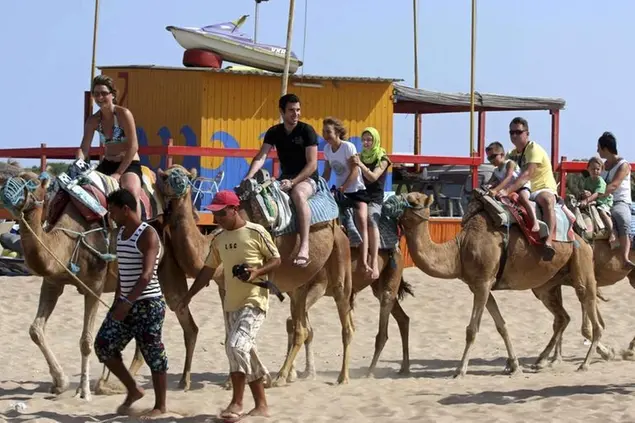PHOTO
Tourism revenue was up 22% year-on-year (y-o-y) between January and the end of August, according to the Ministry of Tourism and Handicrafts (Ministère du Tourisme et de l'Artisanat, MTA), with 4.7m international tourists generating TD1.9bn (€652.7m) during that period.
Some TD674m (€231.2m) worth of tourism receipts were recorded in August alone, with the ministry predicting that 6.5m foreign tourists will travel to the country by the end of the year, a 30% rise on 2016.
While not expected to surpass 2010’s record of 6.9m international arrivals, the figures represent a notable improvement for the sector, which suffered a sharp decline in tourism after two terrorist incidents in 2015.
Foreign arrivals fell by 25% and revenue dropped by 35% following the attacks, with the sector suffering from job losses and business closures as a result.
The decline took a toll on Tunisia’s economy as a whole, as tourism accounts for around 8% of GDP.
New source markets spearhead industry recovery At the forefront of the revival has been a rapid expansion of new markets, providing a fresh source of revenue for the sector.
Russian arrivals have increased dramatically, surging nearly nine-fold from 46,279 in 2015 to 451,432 last year.
This was largely attributed to improving bilateral ties between the two countries, along with instability in traditional Russian holiday destinations such as Egypt and Turkey.
There has also been a jump in Chinese tourism, with 7400 arrivals last year, a 93.6% increase on 2015.
There is hope that these figures will increase further this year and beyond, after visa requirements for Chinese nationals were removed in February and Tunisia was named the “Best African Tourist Destination of 2017” by the China-based Shanghai World Travel Fair.
Chinese arrivals were up 400% y-o-y in the first quarter of the year, according to the MTA, and Tunisian officials expect between 10,000 and 20,000 Chinese tourists to visit the country before the year’s end.
Traditional European and Africa markets step up visits The surge in arrivals and revenue from these new markets has been complemented by a recovery in activity from traditional partners in Europe and Africa.
European tourists have historically formed the backbone of the sector, accounting for 72.6% of all foreign, non-resident arrivals between January and August 2014. However, European tourism dropped sharply following the 2015 terrorist attacks, with revenue and visitor numbers halving.
However, thanks in part to improved security procedures at holiday resorts, along with the UK government’s decision in July to follow France and Germany in easing travel warnings to Tunisia, European arrivals increased by 16% to 1.1m in the first eight months of the year, according to MTA officials.
This decision means that UK travel companies can now resume offering package holidays in the country, which is expected to result in a significant increase in activity.
The return of UK tourists is seen as a potential boon for the sector; pre-2015 UK arrivals averaged around 500,000 per year.
Closer to home, arrivals from neighbouring Algeria increased by more than 60% y-o-y in the first eight months of 2017, with Algerians accounting for 1.6m, or 34%, of all foreign visitors.
The increase comes on the back of a strong marketing campaign aimed at Algerian holidaymakers, and also ties into a national tourism strategy focused on Africa. Tunisia has removed visa requirements for citizens of 11 African countries, including Angola, Botswana, Cameroon, Niger, the Central African Republic and the Democratic Republic of Congo.
Luxury and cultural heritage tourism lead diversification The changing dynamics of Tunisia’s tourism industry have also led to a change in sector strategy, as stakeholders move towards more upmarket offerings and heritage-based holidays.
The announcement that the international hotel chain Four Seasons will open a hotel in Tunis in late 2017 tracks the establishment of a growing luxury offering in the country, and signals a move away from traditional mass tourism deals that characterised the sector in the past.
It is hoped that the development of this type of tourism infrastructure, along with attractions such as high-end leisure activities and VAT-free shopping, will attract more visitors from the Gulf.
In addition to luxury offerings, there has been an effort to develop Tunisia’s cultural heritage attractions.
While tourism is recovering, government officials note that the overwhelming majority of cultural heritage attractions remain empty, with only 60 out the more than 3000 historical sites open to visitors. Those that are open suffer from a lack of supportive marketing, infrastructure and transport options.
Officials are looking at ways to capitalise on the potential presented by heritage tourism, with the segment thought to be another factor in boosting Chinese arrivals to the country.
© Oxford Business Group 2017
